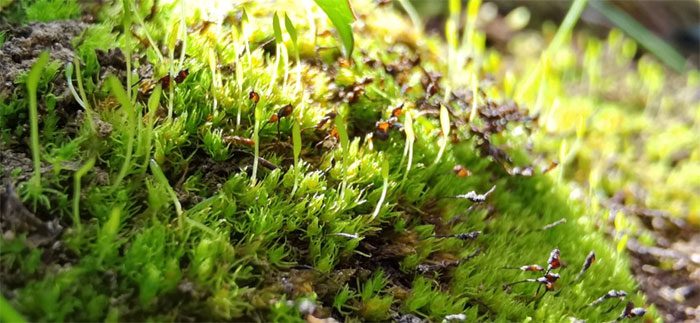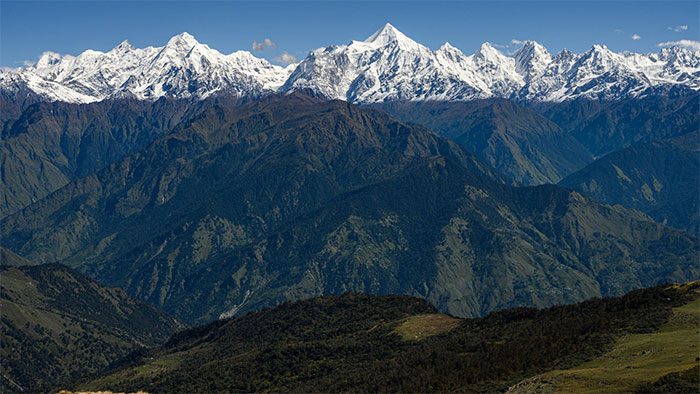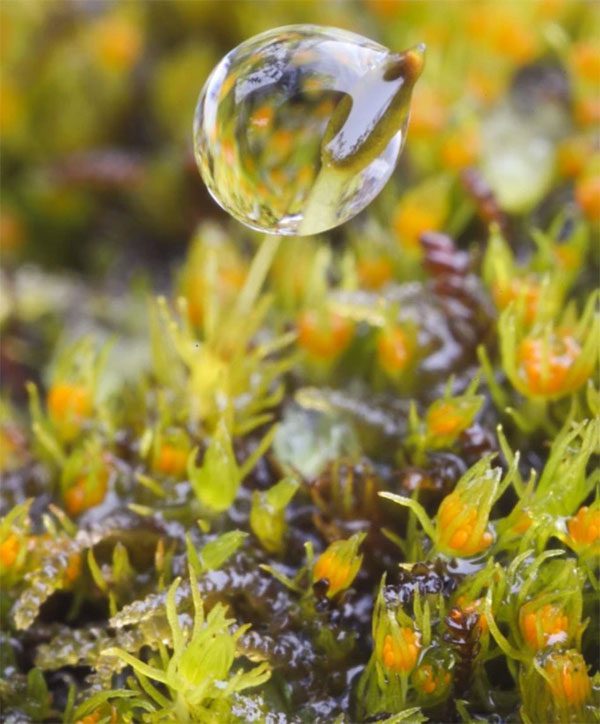Under the weight of the dinosaurs that dominated Earth 165 million years ago, mosses belonging to the genus Takakia continue to photosynthesize and respire unharmed. When the Indian and Asian continental plates collided around 65 million years ago, creating the Himalayas, this ancient moss also ascended to unprecedented heights along with the rocks.
In a new, cold yet sunny environment, the moss adapted and survived until today. However, this genus of Takakia moss is now on the brink of decline, likely due to climate change.
“Everyone talks about dinosaurs and is fascinated by them. But this moss has witnessed their rise and fall,” says Ralf Reski, a biotechnology expert at the University of Freiburg, commenting on this ancient plant species.

For 165 million years, the appearance of the Takakia moss has seemingly remained unchanged – (Photo: Xuedong Li).
The plant genus Takakia, nearly 400 years old, branches into two species, Takakia ceratophylla and Takakia lepidozioides, which thrive in the Tibetan Plateau. They are also found in Alaska and British Columbia, but it remains unclear how these two moss species appeared there.
To learn more about this ancient plant, Reski and his colleagues decided to climb the Himalayas, reaching an altitude of 4,000 meters above sea level to visit the “new” home of the two Takakia moss species.
Quick Adapters
In botany, there exists a designation called “bryophyte,” used to refer to a group of plants such as algae, mosses, and liverworts, and previously, the scientific community was unsure which bryophyte group the Takakia genus belonged to.
However, according to a newly published gene decoding report in the journal Cell, researchers confirm that this ancient moss belongs to a rare group, even possessing one of the highest rates of rapid evolutionary gene changes among known plant species.
Based on fossilized remains of Takakia moss dating back 165 million years, Reski and his colleagues successfully reconstructed the evolutionary journey of this ancient moss genus. Takakia is particularly unique because its appearance seems to have remained unchanged throughout millions of years of evolution; the vast majority of its structure remains intact, and Takakia has not evolved any new stomata for millions of years.
However, upon deeper examination, scientists identified 121 genes that have evolved rapidly, allowing Takakia to survive in extreme environments. The genes of this ancient moss contain mutations that enable them to produce different variants, and the number of rapidly evolving genes is more than twice that of other local moss species in Tibet (such as Herbertus sendtenri).

The Himalayas, home of Takakia – (Photo: NYT).
Scientists believe that when Takakia’s habitat was elevated around 50 million years ago – as the Himalayas gradually rose – the moss was suddenly thrust into a cold environment, forced to coexist with snow and high levels of ultraviolet radiation. That was when Takakia decided to adapt for survival. One way Takakia chose to cope with the environment was by increasing lipid levels in its cells, helping them withstand solar radiation.
Running from the Sun is Futile
In modern times, Takakia moss faces significant challenges.
Over the past decade, the density of Takakia moss has decreased by 1.6% each year, faster than any other local moss species. This low figure places T. ceratophylla on the “vulnerable” list of the Red Book (a comprehensive list of conservation status and species diversity).

Takakia is listed in the Red Book – (Photo: Xuedong Li).
According to researcher Reski, organisms that have evolved to adapt to rare living conditions will be particularly affected when their adapted environment changes. Given the hundreds of millions of years of existence of Takakia moss, global warming can be considered a sudden change. Data collected from 2010 to 2021 show that the density of Takakia decreases as global temperatures rise (on average) by 0.5 degrees Celsius each year.
However, according to expert Lalita Calabria, temperature is not the only factor causing the decline in Takakia density. Bryophytes are inherently sensitive to changes in their habitat, such as air quality and humidity. Reski agrees with this observation, stating that the research team needs additional data to accurately determine the reasons behind the gradual decline of this ancient moss species.
As for the genes of Takakia that have been decoded, they will serve as valuable material for comparison with moss populations in regions outside of Tibet, becoming even more precious as Takakia approaches extinction.
In the future, Reski and his team will continue to work with Takakia moss both within and outside of Tibet to find effective conservation strategies. “Because this moss is rare and not widely distributed, [the effort to] advocate for its conservation will be more persuasive,” Calabria adds.


















































